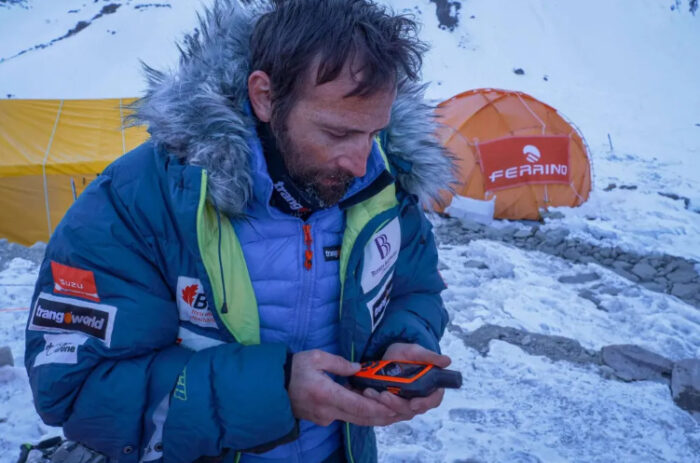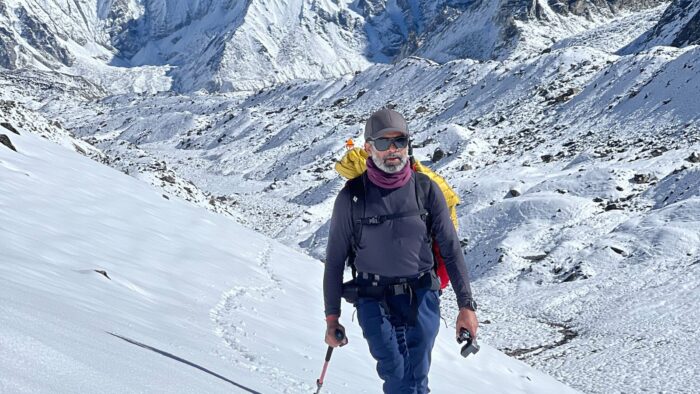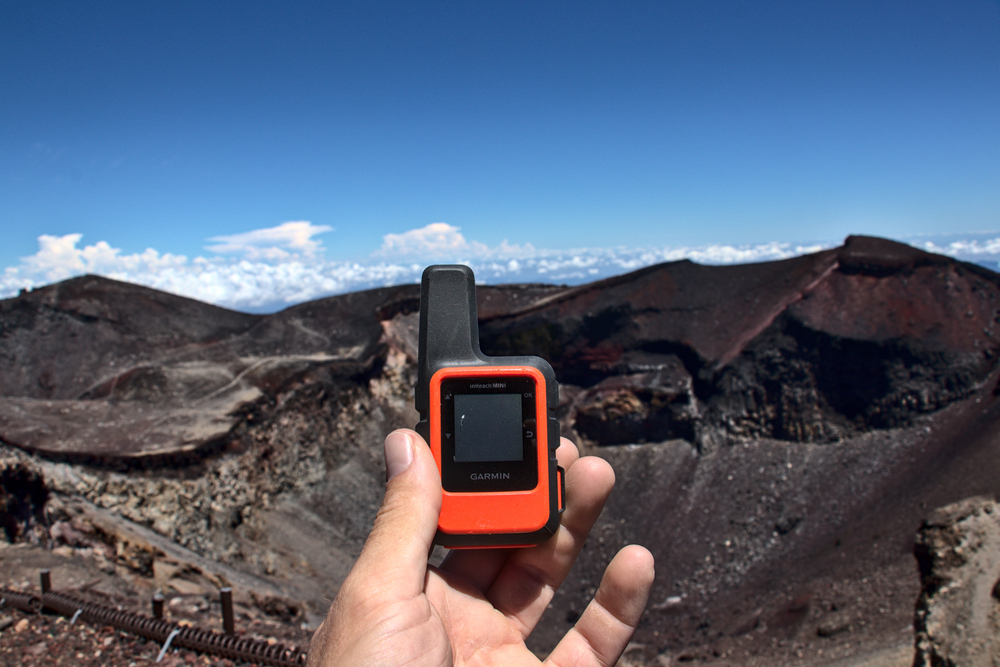In the last few weeks, several trekkers have been arrested in India for carrying a Garmin’s InReach. These satellite communicators, used for texting when there is no cell connection, are illegal in India. All GPS devices with two-way transmission capabilities are.
A trekker from Scotland with the IG handle Hiker_Heather (surname not known) was detained some weeks ago at Delhi’s airport. She was going through security for a domestic flight and naively placed her InReach in the tray. She was arrested and questioned for the rest of the day. Authorities finally released her, but she had to return for a court date.
“I am not the only person who has fallen victim to this law, hence I felt compelled to write this post, in hope that it will save even one of you from suffering the same fate,” the trekker wrote on social media, shocked by her unpleasant experience. Interestingly, she claimed she had been carrying the device around while trekking without out problems — until airport authorities noticed it.
Heather’s case is similar to that of Canadian ultra-runner Tina Lewis, who was arrested at Goa airport for carrying an InReach Mini. The incident caused Lewis a stressful week. She was released on bail, but authorities held her passport. She was ultimately freed after thousands of dollars in legal costs.
Banned since 1933
It is widely known among travelers that satellite phones, especially those connected to the Iridium network, are forbidden in India. But many seem not to know that communicators such as the Garmin InReach are also connected to Iridium.
The InReach can register the user’s location and pace, but it also allows satellite communication with the outside world via SMS. It is this that violates India’s Wireless Telegraphy Act, which was passed in 1933, long before satellite communications existed and even before India’s independence. The law cites security reasons to prohibit any wireless system that can transmit messages abroad. When originally passed, the act referred to radio transmissions. The old document reads:
Whoever possesses any 1 [wireless telegraphy apparatus, other than a wireless transmitter,] in contravention of the provisions of section 3 shall be punished, in the case of the first offence, with fine which may extend to one hundred rupees, and, in the case of a second or subsequent offence, with fine which may extend to two hundred and fifty rupees.
The 1933 Act was amended various times over the years, most recently by the 2023 Telecommunications Act. Yet all versions prohibit the use of satellite transmission devices unless the traveler obtains special permission from the Department of Telecommunications before entering the country. However, such permission is neither fast nor easy to obtain.
What not to carry
Another source of stress is finding out which devices are banned and which are not. In addition to InReach devices, several models in the Garmin Edge GPS series may cause similar problems. InReach’s website includes a list of countries where satellite communicators are forbidden or regulated.
However, several sites and forums on the internet state that GNSS/GPS-connected devices with receive-only capabilities are safe to bring. So what can we put in our backpack on our next trip to India?

Alex Txikon checks his InReach device during an expedition. Photo: Alex Txikon
Insider tips
We asked local mountain guide and long-distance cyclist Sunil Nataraj. He admitted the issue has been a pain for him as well.
“The ban affects not only foreigners but Indian nationals,” he said.
Nataraj, an Everest summiter and guide, told ExplorersWeb that he uses an InReach when he’s in Nepal but leaves the device with a friend in Kathmandu before returning to India.
Unsurprisingly, locals can’t even buy an InReach device in India.
So, is it possible to use a satphone in India under any circumstances? It is, but not as an independent traveler. Registered expedition companies based in India may apply for a license to use such devices at the Department of Communication and the Ministry of War. The administrative process is long and complex, which leaves out most small companies. Only a few of the bigger operators obtain that license for their guided trips. A client in one of their groups can then use the satphone on the expedition.

Sunil Nataraj. Photo: courtesy of Sunil Nataraj
Warning for cyclists
Even with non-Iridium devices, Nataraj explained the problem is not in the field but entering the country. GPS computers for cyclists, in particular the Garmin Edge series mentioned above, are also illegal.
Nataraj says this is a hot issue among India’s large cycling community. Many athletes travel to competitions and long-distance races abroad and face problems when returning home.
“Some friends of mine traveled to competitions abroad carrying their own Garmin GPS devices, which they had bought in India, but they had them confiscated when they returned to the country.”
As of last week, however, Nataraj says that Garmin’s bike devices were unavailable to purchase in his country, although Coros had a similar device in stock.
Nataraj said smartwatches are allowed, including when entering and leaving India. All smartphones are also permitted. The newer iPhones allow two-way satellite texting via Globalstar when off-grid, but that feature only works in the United States and Canada.
Serious consequences
Breaching Indian law can have serious consequences.
“If you get caught with a device that includes an Iridium chip, which may happen while entering or exiting the country, you may be arrested, especially foreigners,” says Nataraj. “Indian nationals will most likely have the device confiscated at the airport and will be released with a warning.”
Asked if the situation might change, Nataraj explained that groups such as India’s Mountaineering Federation are trying to make their case. But he believes that mountaineering is not yet powerful enough to change such a well-entrenched policy.
Compromising safety
The restrictions on communications are especially troublesome for climbers who venture into isolated parts of the Indian Himalaya. InReach and similar devices have become essential for communications and safety. An expedition’s only option is to return to the old-school low-frequency radio in base camp — if they have a base camp crew at all.
In a way, it’s like returning to the 20th century, when expeditions spent weeks out of touch. They can only notify the outside world of their safety or success when they return to a place with internet or cell coverage.

Trekkers in the Indian Himalaya, Nanda Devi in background. Photo: Shutterstock
No perfect solution
It is not ours to determine whether a century-old law makes sense in the hyper-connected 21st century. Undoubtedly, some parties stash inReaches in their checked luggage and hope they get away with it. Many probably do. But the fact is, GPS-connected devices are a problem in India.






